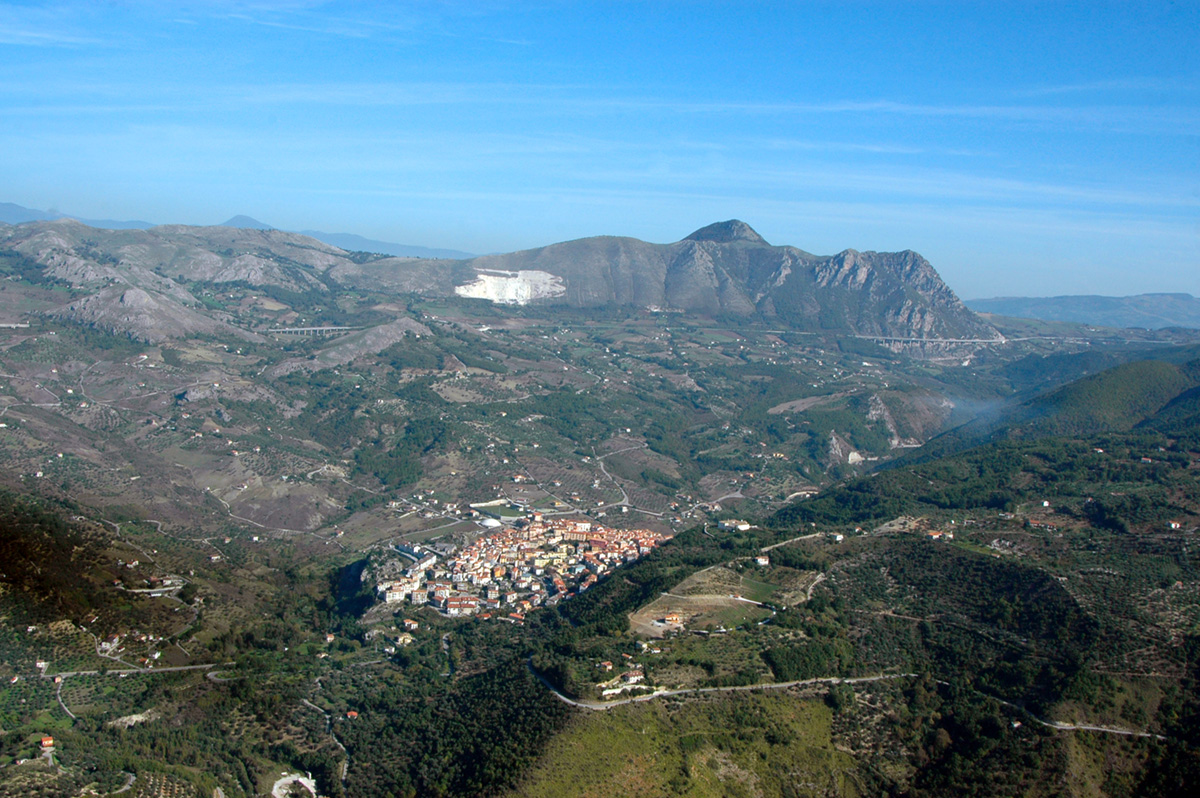Vietri di Potenza
Vietri is the gateway between Basilicata and Campania, a naturalistic and cultural world to discover, made of that authentic nature typical of the Marmo Melandro and of architectural and historical treasures of great charm. A series of gorges, interspersed with various sulphur springs, bring it closer to the morphology of a small canyon; a visit to the Puzz’gnunt Gorges is indeed a fascinating naturalistic excursion among whirlpools and high and steep rocky walls carved by the waters of the Melandro. Surprising is the artistic heritage featuring a rich series of works of art preserved in numerous churches including the Mother Church of San Nicola di Mira, the Chapel of the Madonna delle Grazie and the Convent of the Friars Minor Capuchin.
Vaglio Basilicata
Located just outside of Potenza,Vaglio di Basilicata is notable for its Museum of the Ancient People of Lucania which not only displays archaeological findings but also a painting by Leonardo da Vinci, thought to be a self-portrait.There is also a Museum of Rural Civilisation located here.
The old Neviera, or ice houses, consisting of two circular buildings which stand not far from the town on the slopes of Monte Giove were used in the 14th and 19th centuries to preserve food, the ice was also used to treat diseases. Snow would have been carried to the ice house, beaten into layers and then covered with leaves to insulate it. It is possible that the second building was actually intended for a guard to protect the ice.
If interested in archaeological discoveries, visit Rossano where the ‘House of Pithoi’ is the reconstruction of a 5th century BC home. Nearby you will also find Serra San Bernardo, another archaeological area of interest.
Oppido Lucano
Its name derives from “oppidum”, a fortified city, and suggests a certain solemnity that the visitor also finds in a series of architectural structures scattered in the streets, such as the old castle, once known as the “magnum castrum”, built between 1047 and 1051, whose main portal still displays the Orsini coat of arms, the noble palaces and the ancient places of worship, among which the Mother Church of Saints Pietro and Paolo, a treasure chest of artistic jewels such as wooden statues and paintings from the 1600s, and about a kilometre from the town, the Rock church of Sant’Antuono erected on tuff by Basilian monks and preserving a series of frescoes depicting different moments in the life of Christ; starting from the Nativity in the first passage on the left, we retrace moments of his childhood, and then move on to the cycle of the Passion, death and Resurrection housed in the central nave
Tolve
The hilltop town of Tolve is located north of Castelmezzano, an ancient Medieval centre, defended on a cliff and dominated by the remains of its ancient Castle. The feast of San Rocco is celebrated here in August and September.
Other points of interest include the portal of the Church of San Pietro and the nearby remains of a Roman villa which dates back to the 4th century BC. The villa was abandoned in the 3rd century BC after a fire which was probably linked to the plundering carried out by Hannibal’s troops during the Second Punic War.
Tito
Tito is situated south west of Potenza and is near the Parco Nazionale dell’Appennino Lucano
Val d’Agri-Lagonegrese and the WWF Riserva Naturale Lago Pantano di Pignola, which contains the Lake of Pantano di Pignola.The Franciscan Convent of St.Anthony of Padua, and its adjacent church, contains at least one fresco by il Pietrafesa, a famous painter of Basilicata.
Tito’s key attraction, however, is its proximity to the sulphur springs and Torre di Satriano, an archaeological site.
Savoia di Lucania
Homeland of anarchist Passannante, who in 1878 attempted the life of King Umberto I of Savoy, the village dominates the Melandro area from the top of a relief surrounded by greenery. We can see from a distance the silhouettes of the medieval castle with the two towers and of the Mother Church of San Nicola di Bari, which stand out from the rural houses of the village. The latter are densely arranged, leaning against each other, separated by narrow alleys that make the morphology of the place even more intriguing. Worth a visit is the Mem ory Museum (Museo della Memoria) with sections dedicated to the anarchist movement, the history of Fascism and the figure of Giovanni Passannante.
Satriano di Lucania
Satriano di Lucania is located south west of Potenza, on the edge of the Parco Nazionale dell Appennino Lucano Val d’Agri-Lagonegrese. Giovanni de Gregorio, more often known as il Pietrafesa, and one of Basilicata’s most famous painters, was born here. He was very active in the early half of the 17th century and the Chapel of San Giovanni contains work by him in the form of frescoes painted above the altar.
Sasso di Castalda
Among dense beech woods and mountains arranged almost to protect the village, Sasso di Castalda is known for its breathtaking views and the hiking routes that its territory offers.
Among the characteristic streets embellished by flowered balconies and interspersed with ancient buildings, inebriated by the inviting scent of local cuisine, you can reach one of the most famous attractions of Basilicata, the Alla Luna bridge: a Tibetan bridge that connects two spurs and overlooks a terrifying cliff. The structure is dedicated to Eng. Rocco Petrone, a member of the NASA staff responsible for the Apollo 11 mission that in 1969 brought man to the moon. The crossing of the structure, consisting of 300 steps and a span of 120 meters, is evocative and adrenaline-pumping. Upon arrival, a glass sky-walk and an unexpected panorama will reward the efforts of the brave.
Sant'Angelo Le Fratte
Situated almost on the western border of Basilicata, Sant’Angelo le Fratte lies at the foot of a mountain and is known as the Land of Wine. The small town contains new bronze sculptures by the artist Pierfrancesco Mastroberti, wine caves built between the rocks and over 50 murals.
It’s worth visiting the Cathedral Church of Sacro Cuore e San Michele Arcangelo which contains a throne, carved choir stall, paintings attributed to il Pietrafesa and two enormous bowls with carved marble pedestals of an unknown age.
Its main attractions, however, are the climbing wall and the beautiful River Melandro which is suitable for fishing. For those seeking an isolated, natural experience, one can hike to the Fields of Venus and soak in an expanse of wheat, potatoes, corn, fodder and barley planted at 1300 metres above sea level in a place with few other people around.At certain times in August during the Open Cellars event there are wine tastings, cheese and other typical local food.
Ruoti
History counts it among the strongholds founded by the Romans and, later, rebuilt and fortified by the Lombards. The combination of history and nature is striking in this small Lucanian village, which is perched on a hill. Wild woods alternating with romantic vineyards irrigated by natural springs are combined with ancient alleys and stone portals of noble palaces. Characteristic is the historic centre from which it is possible to admire the Mother Church dedicated to San Nicola di Bari, characterised by a Romanesque structure and a baroque interior style, and to reach the remains of the Roman rustic villa of San Giovanni.











